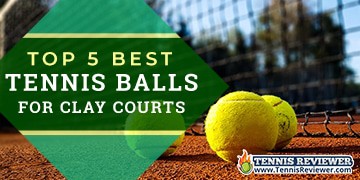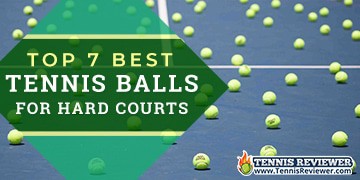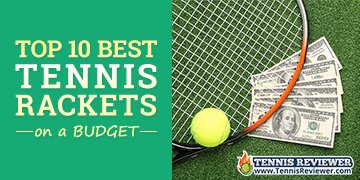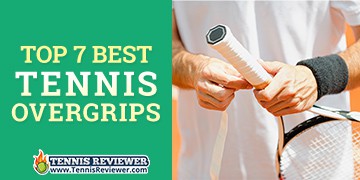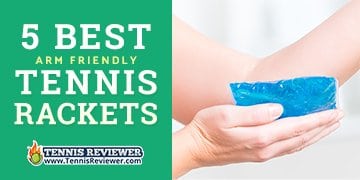Picking the right tennis ball will help you take your game up a notch. Regardless of your level of experience, playing with the best tennis balls will have a positive effect on your performance.
In professional as well as amateur tennis courts the quality and responsiveness of your tennis ball will change the way your tennis game will go. In this article, you’ll learn about the different types of tennis balls, how to pick the right one, in addition to reviews of some of the best tennis balls on the market.
Table of Contents
Different Types of Tennis Balls
Just like any other sport, there is special gear that is designed for professionals and another type that might be more suitable for novice players. Buying the wrong type of balls will have a negative impact on your performance. If you’re still learning, you’ll face more difficulties when you’re playing with professional tennis balls.
Beginner Balls
These are designed for entry-level players who don’t know much about the game. If you’re still attending tennis classes, then you should grab those for your upcoming match.
Beginner tennis balls aren’t of low-quality. They’re usually less expensive than the professional ones and have an average durability. The idea is that you’re expected to change these after a while as you get better.
Entry-level balls tend to bounce slower. This means that they will be easier to hit and will facilitate the job of a beginner tennis player.
Intermediate Balls
These are suitable for an enthusiastic tennis player who is likely to head to the tennis court three or four times a week. They’re durable and usually more expensive than beginner tennis balls as they’re made of high-quality materials.
Professional Balls
If you’re a professional tennis player, then you certainly know how the quality of the ball will affect your chances in winning. Professional tennis balls are made of the highest quality materials and are more expensive, giving the player a competitive advantage over his competitors.
These are durable and long-lasting balls that don’t show any signs of wear and tear after several matches. They offer consistent playability at different altitudes and with various playing styles. These are the balls that you’ll see played during professional and international tournaments.
Pressurized vs. Pressureless Balls
Whenever you’re shopping for tennis balls, you’ll get to choose between pressurized and pressureless balls. Here are some differences between the two types.
Pressureless Balls
Beginners and entry-level players prefer pressureless balls. These are the balls that you can easily use in recreational games played by amateur and novice players.
Pressureless balls have a rubber structure that provides the needed bounce. The more you use the balls, the more the felt will wear which means that they’ll gain more bounce with time and not the other way around.
These balls have a low internal pressure that could be 1 Psi or less so they’re less bouncy than pressurized balls. They will be easier to control and hit so they’re usually used for tennis practice.
If you’re looking for balls for your tennis ball machine, then you need to pick pressureless balls. They’re quite durable but they might be too heavy for some players.
Some medium pressureless balls are approved by the International Tennis Federation to be used in tournaments played at higher altitudes if they have been acclimatized for at least 60 days before they’re used. Most European players prefer pressureless tennis ball, although they’re not that popular in the USA.
Pressurized Balls
Pressurized Balls are meant for professional players. They’re lighter and tend to bounce more so they’re more suitable for experienced tennis players.
Compared to pressureless balls, pressurized tennis balls are stiffer but they don’t last for long. As a matter of fact, they start to decay as the pressure changes the minute they’re removed from the can.
These balls have a hollow core so they provide a better feel and response. They’re lighter so they’re suitable for people who suffer from tennis elbow.
Professional tennis players are able to generate more spin and speed using pressurized balls. They might be quite difficult to control, especially if you’re a beginner but they will provide with a great match if you know how to control the ball.
Choosing the Best Tennis Ball for Different Courts
The court surface you’re playing on will affect your tennis ball choice. Some balls will perform better on certain types of courts. Here are a few differences between various types of tennis courts.
Hard Courts

Your tennis balls are likely to wear faster when you play on hard courts. This is why you should be very careful while picking your tennis balls.
Due to the density of the material used to build the court, the tennis ball is likely to bounce faster and higher. This can be a bit problematic, especially for entry-level players.
When picking tennis balls for a hard court, you should make sure that it has extra felt. This will improve the durability of the ball and give it more control so it doesn’t bounce that high. Durability should be your main concern when you’re choosing tennis balls for hard tennis courts.
Clay Courts
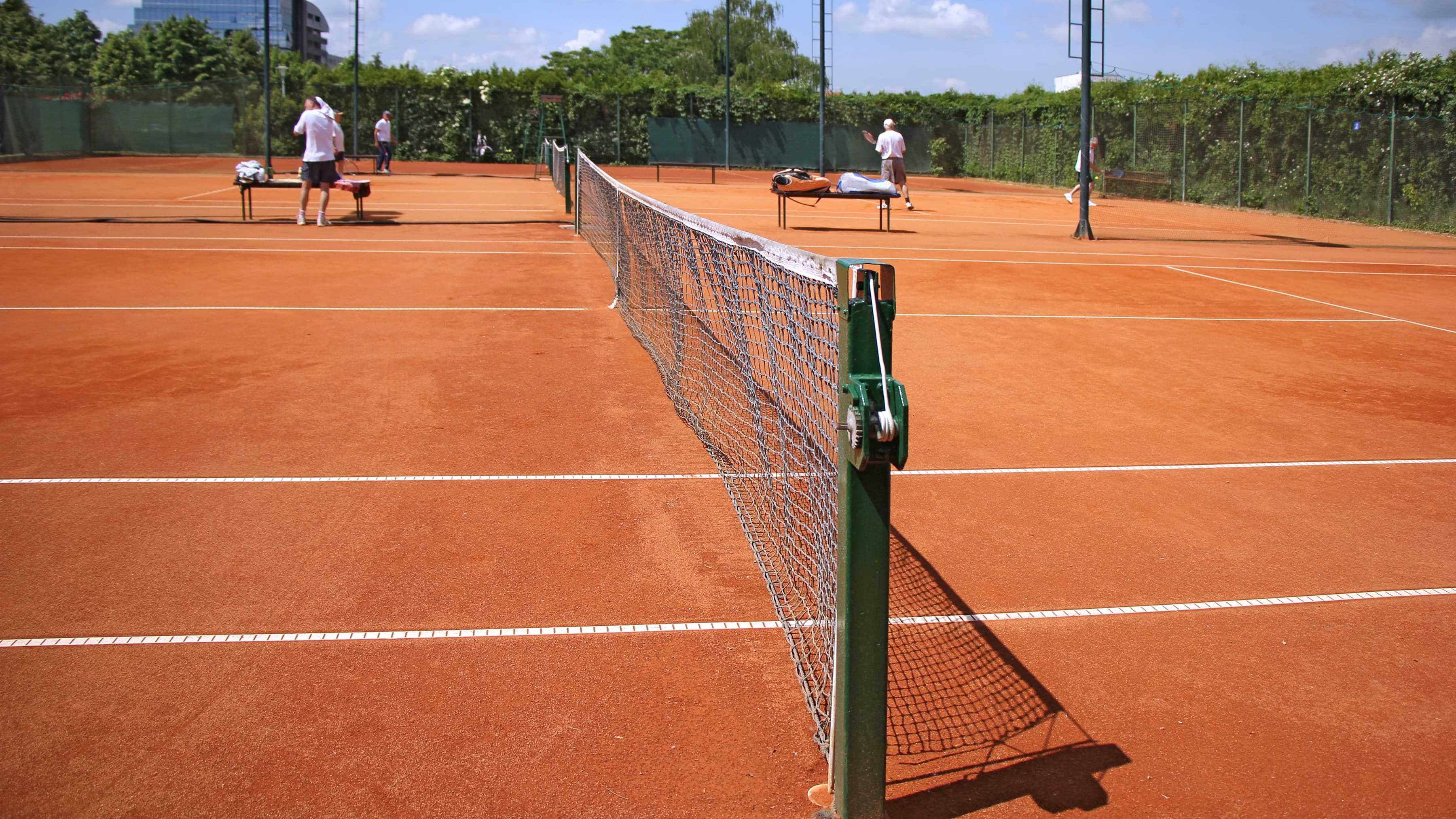
These are very common in Europe and feature a soft surface. As a result, injuries due to sliding and falling aren’t that serious. However, sliding is a common accident when you’re playing on clay courts, so most tennis players need to practice and adjust their playing style in order to avoid these situations.
Due to the nature of clay, most tennis balls will have unexpected bounce so they won’t be that easy to control. If a tennis ball has extra felt, it will likely pick up more dirt and clay off the ground. This will make the ball heavier and more difficult to control.
Less felt means that the ball will be less durable, but it will have more predictable bounce. So you’ll have to find tennis balls that provide the needed balance between durability and predictability.
Grass Courts
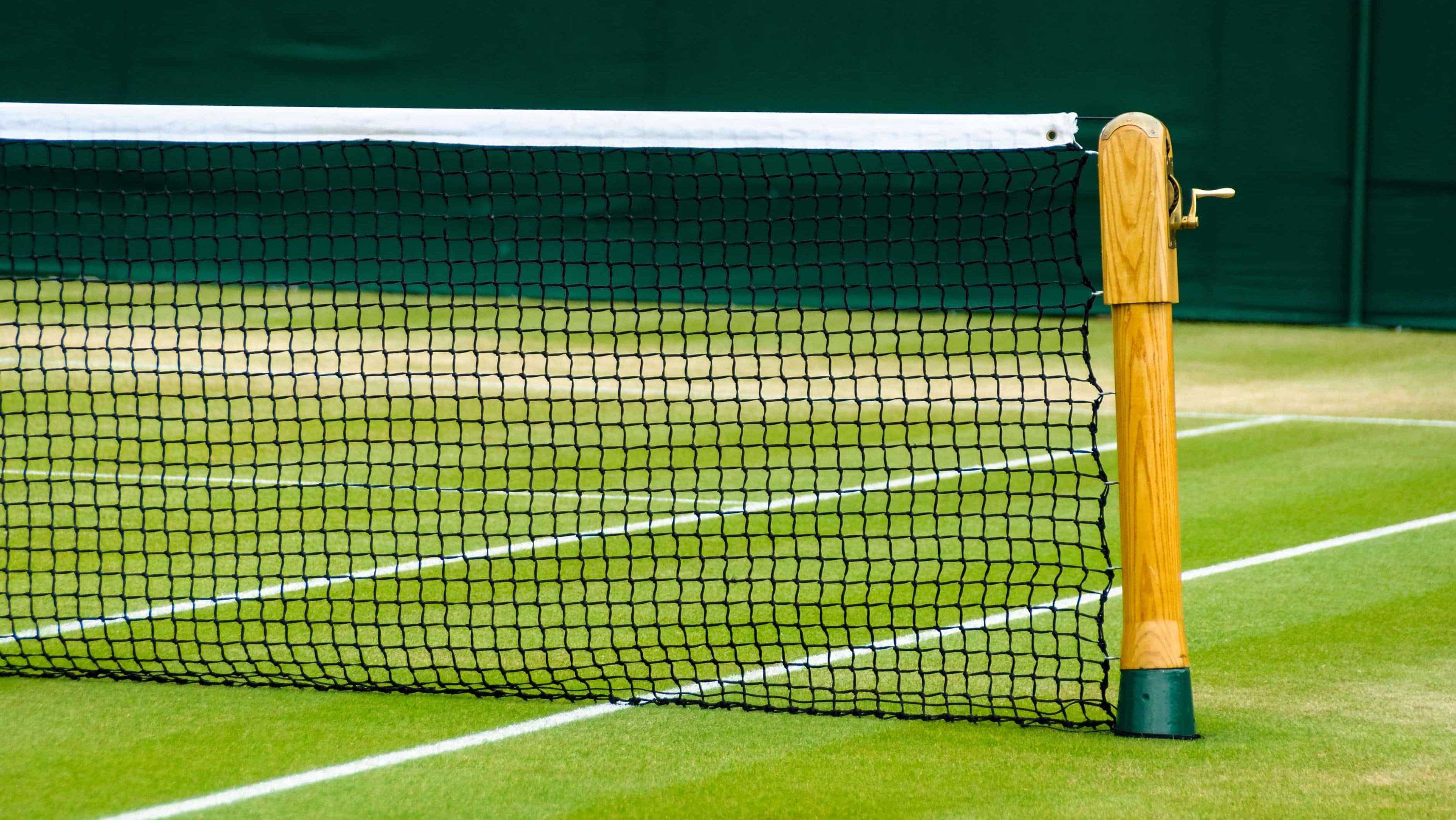
These might not be that popular but you still see them at Wimbledon. Grass courts take some time until you’re used to playing on them. The ball will bounce lower due to the nature of the soft surface, so they’re a bit challenging for novice and entry-level players.
Choosing a good tennis ball for your grass court is extremely important. The surface decreases the bounce of the ball, so if you pick a ball that already doesn’t bounce high you might end up with a dead ball that offers no bounce at all.
Nevertheless, there are special tennis balls designed for the best performance on grass courts. These might have special felt that increases the bounce and responsiveness on the ball so you can enjoy your game on this challenging surface. Moreover, you should practice the serve and volley tactic to overcome the low bounces.
Features to Consider While Shopping for the Best Tennis Balls
While most people think that shopping for tennis balls is pretty straightforward, investing in the right balls will have a great impact on your game and your overall performance as a player.
There are several factors in addition to your skill level and the court type that you should take into consideration before buying tennis balls.
Quality Level
Tennis balls come in three levels; recreational, championship, and professional. Recreational balls are the ones used by entry-level players. They’re suitable for all practice matches, tennis machines, and other recreational activities.
Championship balls are the ones used for league match play. They’re of higher quality and usually more expensive. Professional balls are the ones used by pros in international tournaments. Unless you’re a professional tennis player, there’s no need to spend this amount of cash on a pro tennis ball.
Regular Duty vs. Extra Duty
Regular duty balls are suitable for indoor and clay courts. They have a normal amount of felt that protects the ball and make it quite durable.
These balls have less felt so they’re typically softer and slower. They won’t pick up much clay or dirt that might weigh the ball down.
However, if you usually play on hard and grass courts, then you’ll need to buy something more durable. Extra felt will make your ball more durable so it can withstand the rough play on a hard surface.
Balls that have too much felt don’t work well when used on a clary court.The abrasion-resistant fuzzy surface on extra duty balls picks up the dirt and affects the weight and bounce of the ball.
High Altitude
If you’re playing at or above 4000 feet of altitude, then you need to buy special high-altitude balls. Pressurized balls bounce higher and travel faster at high altitude, so you’ll need special tennis balls to compensate for the difference in air pressure.
Playing at a high altitude is problematic for all players, even the most experienced ones. This is why you should make sure that you’re equipped with the right gear.
- ALL HIGH ALTITUDE COURTS: Extra duty tennis balls can be played on hard court matches and on indoor and outdoor softer, clay court surfaces as well. Please note that Penn high altitude tennis balls are intended for elevations of at least 4000 feet
Tennis Elbow
All the pleasure of playing tennis usually comes with a price. Tennis elbow is a painful condition that can affect the quality of your life. This is why there are special balls that have been introduced to the market to help players enjoy a pain-free game.
These elbow ease tennis balls represent less pressure on the elbow while hitting the ball. Some brands offer balls that reduce the impact on the elbow by 15%. As a result, you can play your game without enduring the tremendous elbow pain at the end.
How to Choose the Best Tennis Ball for Kids or Beginners?
Faster tennis balls that work for pros can be quite challenging for kids and any beginner who doesn’t have much experience with tennis. The best balls for kids are slower foam balls that don’t have much speed or bounce because they’re easy to control.
Beginner balls come in three stages; red, orange, and green. Each one of them is designed for a special purpose.
Red
Stage 3 or red tennis balls are the ones designed for children who are 10 years or younger. They’re approved to play on any 36-foot court and allow young players to build their skills.
These balls are slow enough for kids to improve their coordination which increases their confidence. They can be used throughout the practice stage until players can advance to a bigger court.
- GREAT FOR BEGINNERS: The QST 36 kids' foam tennis ball features a higher density for controlled bounce and reduced speed. An ideal beginner ball for playing on a 36' court.
Orange
Stage 2 or orange balls work on a 60-foot court. They’re still slow but are more advanced than the red ones. These are designed for older kids or entry-level adults who don’t have much experience with tennis.
- GREAT FOR BEGINNERS: The QST 60 kids tennis ball features lower compression for controlled bounce and 50% reduced speed. An ideal junior ball for playing on a 60 court.
Green
Stage 1 or green balls are the typical beginner-level balls that you can use for practice purposes before advancing to pro balls. These can be used on a typical 78-foot court and feature a lower bounce than the balls designed for professionals.
Pro players might also use these balls for practice purposes as they offer more control. They’re typically more durable than red and orange balls.
- GREAT FOR BEGINNERS: The Control Plus kids tennis ball features slightly lower compression for controlled bounce and 25% reduced speed. An ideal junior ball for the first time playing on a 78 court.
Reviews of the Best Tennis Balls
In our reviews, we’ll be focusing on pressurized tennis balls because they’re the norm in the US. We divided them into different levels so you can choose the right one depending on your skills.
Professional Pressurized Tennis Balls
These are the ones designed for the most experienced players. They feature high-quality materials to provide the best playing experience.
Dunlop Sports Grand Prix
Dunlop is probably the most popular name in the world of tennis in the US. This brand offers different types of tennis balls, although some players believe that the balls are harder than other brands.
This particular Grand Prix line is designed for hard courts, so it’s more durable with special felt that boosts the longevity of the ball. Thanks to the MaxGlo felt, you’ll have more time to prepare for the shot. The felt is 14% brighter than other balls so it will help you see the ball earlier.
- DUNLOP GRAND PRIX EXTRA DUTY TENNIS BALLS: The Dunlop Grand Prix Extra Duty Tennis Balls provide consistent performance for tournament-style play on hard surfaces.
Because this is the Hard Court version, the balls are designed to withstand abrasion. They can be used on indoor courts.
These balls are USTA and ITF approved. The rubber core features 14 ingredients to enhance the performance of the ball. This is a heavyweight ball so it’s not suitable for practice and beginner players.
The brand offers different types of balls that suit all players and playing conditions.
- Fort Clay Court.
- Fort Elite.
- Fort Max TP.
- Club All Court.
- Fort Tournament.
- Fort Roland Garros Clay Court.
- Club Championship.
- Pro Series.
- Pro Team.
- Pro Tour.
Slazenger Wimbledon
Slazenger is a popular brand among tennis lovers as it has offered players with high-quality balls for years. These balls are a bit more expensive than the Dunlop balls but they’re quite reliable and durable.
The cloth on the ball features hydro guard technology which repels 70% of the water upon impact. Unlike other balls, these balls won’t feel heavy if it starts to rain or if you’re playing on a wet grass court.
- Slazenger Wimbledon Official Tennis Balls- 6 Tubes 24 Balls Special Offer -
These balls aren’t used on a tournament level, unlike Dunlop balls. However, they’re great for indoor and outdoor recreational games. Thanks to the high visibility, these balls are easy to spot by the players and spectators in any weather condition.
While they might not be that popular in the US, Slazenger offers different types of balls that cater to the needs of various players.
- Orange mini tennis balls.
- Green mini tennis balls.
- Stage 3 red tennis balls.
- Tournament tennis balls.
- Open tennis balls.
- Hard court tennis balls.
- Training foam balls.
All these balls are highly responsive. This is why they’re gaining more popularity among American tennis players.
Penn Pro Marathon Extra Duty
This is a well known and popular brand among pros as well as intermediate-level players. The Pro Marathon Extra Duty balls are designed to last on all types of courts and can be used at high altitudes.
The LongPlay guarantees that durability and longevity of these balls even when they’re used on hard courts. For players who enjoy intense games and long practice sessions, the Pro Marathon extra duty balls from Penn represent the best choice.
- Pro Penn Marathon is the official ball of PTR because of its guaranteed longevity, durability and visibility.
The balls are covered with the Smart Optik which provides better visibility so you’re more able to control your shots with better anticipation. Moreover, the Encore technology is designed to make the ball core last 22% longer than other Penn balls. This is the longest-lasting ball from this brand.
Penn offers other types of balls for different courts and playing styles.
- Penn Championship Extra Duty.
- Penn Championship Regular Duty.
- Penn Pressureless Tennis Balls.
- Penn Championship High Altitude Tennis Balls.
Wilson Championship Regular Duty
This ball is the official ball of the Australian and US Championships. It’s an excellent regular duty ball for clay and indoor courts. Nevertheless, some players feel that it can also be used on hard courts with no issues. It’s ITF and USTA approved.
The Dura-Weave felt improves the performance and visibility of the ball. As a matter of fact, Wilson balls are used in more than 45 professional tournaments worldwide. This is an excellent choice for pro and intermediate-level players thanks to the durability and longevity of the ball.
- Wilson is the Official Ball of the US Open and the Australian Open Grand Slam Championships
Wilson offers two types of balls; regular and extra duty. Players have the option to choose between the two types depending on the courts they usually play on.
Regular duty balls are suitable for clay courts where they offer the needed bounce without getting too heavy. Extra duty balls withstand hard courts. These are more durable and won’t need to be replaced often.
Babolat Championship Ball
These balls are ITF-approved but they come last among pro tennis balls as they don’t offer the great qualities of other brands. Nevertheless, if you’re looking for reliable and visible balls, then the Babolat balls won’t disappoint you.
Because they’re more affordable, these are suitable for training purposes. They come in different-sized cases are great value for money.
The felt on these balls is bright yellow for better visibility. Most balls offered by Babolat feel quite heavy compared to other brands. This is why some players might not like them at the beginning.
However, after trying these balls you’ll be impressed with their high quality and durability. The VS version is even heavier than the Team version. Nevertheless, it’s one of the most durable tennis balls on the market.
Intermediate Pressurized Tennis Balls
Some players want to buy high-quality balls that don’t need to be replaced during or after every match. Intermediate-level balls come in several types and cover a broad spectrum of playing styles and experience levels.
Most of the intermediate level balls come from the same brands that offer high-quality professional tennis balls. These low-tier balls are not flimsy, but they might not be acceptable in pro tournaments.
Dunlop Lower-Tier Balls
The leading brand doesn’t offer low-quality balls. So even if you’re buying the intermediate level balls, you know that you’ll be getting the exceptional quality that will enable you to enjoy every tennis match.
The Championship line offers the right balance between performance and durability. These balls are suitable for casual games and will help you improve your playing style.
The Champion balls can be used on any court type. They will offer you faster serves so they might not suit entry-level players.
Dunlop Pro balls are also popular among avid players who don’t play professionally. They’re quite durable, although not as durable as the ones designed for professional use.
Nevertheless, most intermediate-level players don’t feel the need to replace their balls that often. They don’t play as much as pro players so they’re less likely to experience the wear and tear.
Penn Lower-Tier Balls
Penn offers balls that are popular in professional as well as recreational play. Regular duty balls are suitable for playing on soft courts without jeopardizing the visibility or responsiveness of the ball.
However, regular duty balls from Penn offer more bounce than what an intermediate player would expect in a ball. As a result, they might be a little bit hard to control, especially at the beginning. Nevertheless, the balls tend to correct themselves after 2 or 3 matches, so you’ll be able to control them more accurately the more you play.
- ALL COURTS: While regular duty tennis balls are best suited for soft, clay courts, they can also be played on all indoor and outdoor hard court surfaces as well.
Wilson Lower-Tier Balls
Pro players enjoy the durability, responsiveness, and feel of the Wilson balls. But these balls are also suitable for intermediate players who want something that offers good playability and durability.
These balls are extremely resilient, without affecting the performance or bounce. As a result, they’re very popular in American and Australian championships.
Most intermediate and less frequent players opt for the Wilson Grand Slam tennis balls. These are of the same excellent quality but they’re not ITF approved. They’re also cheaper so they’re a good choice for recreational play.
Prince Lower-Tier Balls
Although this brand offers balls for pro as well as intermediate level players, it’s not the number one choice for more frequent players and professional tournaments. Prince offers a special line for amateurs and intermediate level players; the Prince Championship. It’s not that durable but this is not an issue for less serious players who only play tennis occasionally.
Gamma Lower-Tier Balls
This is another brand that isn’t popular among pro players but is a favorite of less experienced tennis players. These balls are not that durable so as an amateur, you can enjoy their satisfactory performance while they last.
Beginner Pressurized Tennis Balls
These are less expensive balls but they’re not cheaply made. Beginner balls are sold in any shop that sells tennis gear and can also be bought online.
All of the big manufacturers offer a special line for beginner players who need high-quality balls that are also budget-friendly and not that difficult to control. However, these balls are not designed to last as long as pro balls. They’re made of medium-quality materials so they won’t withstand heavy-duty use or extreme playing conditions.
Some of the perfect choices are Penn Tribute, Dunlop Progress, and Wilson Tribute. These balls bounce well but not too high to provide players with more control. The felt quality isn’t exceptional but the balls will last for some time since players don’t hit that hard.
Beginner players should focus on playability so they need a ball that gives them more control so they can become better. Once you feel that you’ve improved, you can invest in a higher-tier ball that will last longer.
- ALL COURTS: The Tribute All Courts tennis ball is suited for both hard and soft, indoor & outdoor playing surfaces.
Practice Pressurized Tennis Balls
These balls are designed for practice purposes only. Dunlop Academy Practice, Wilson Team, Penn Practice Coach, and Gamma Practice are all good choices for first-timers and those who have never played tennis before.
These balls are not approved for any tournaments but they will help you improve your level as you train to become a better tennis player. Most of the balls are quite affordable and they come in entire cases that last for a long time.
- GREAT FOR TRAINING: The practice tennis balls are ideal for training sessions with a coach or a machine.
Best Tennis Balls FAQs
1. What are Tennis Balls Made Of?
In the past, tennis balls were made of wool and were covered with leather. The interior of the ball was filled with animal parts, putty, and even human hair.
Today, tennis balls feature an inner core made of rubber casing. This is filled with pressurized air and the outer part is covered with woven durable felt. Pressureless balls aren’t filled with air.
2. Why are Tennis Balls Sold in Cans?
Only pressurized balls are sold in cans. These cans are designed to maintain the air pressure and bounce of the balls for as long as possible. Once the balls are removed from the can, the air pressure inside will start to decrease until the balls have to be changed. Pressureless balls don’t come in cans and can be sold in bags or boxes.
3. Are Pressureless Tennis Balls Good?
If you’re a beginner, then they’re probably are. Pressureless balls are less bouncy and this means that they’re more predictable. They’re more suitable for novice players who might feel overwhelmed by the bounce of a regular pressurized ball.
Nevertheless, if you’ve used pressurized balls before, you might find pressureless balls more difficult to play with. You can give them a try and see how you’ll be able to control them.
4. How Long Can Pressurized Tennis Balls Last?
The time will differ from one brand to another. It’s also affected by the playing style and the court you’re using your balls on. However, it’s expected that the balls will start to lose some of the air pressure the minute you remove them from the can.
Proper storage conditions can slow down the process and allow you to use your ball a little bit longer. Most pro players will still use a ball that has lost some of its pressure for practice and warm-up, but they won’t use it during the game.
Intermediate and beginner players wouldn’t notice the decline in pressure as it may take weeks until it becomes noticeable. However, most pro players can detect the slightest change in the ball’s pressure so they will have their balls replaced more often.
5. How Often Should You Change your Tennis Balls?
This depends on your playing style and the nature of the game. Most pro players will change their ball after 7 or 8 games, although some will do this more often. The key is to change the ball once you feel that it’s going to have a negative impact on how the game is going.
Conclusion
As you can see, choosing the best tennis ball is a long yet interesting process of analyzing the features and pros of each type. One ball isn’t the perfect choice for all players and games. The same player can choose different tennis balls depending on the playing conditions.
The more experienced you get, the easier the process will become. As you become more aware of your needs and the courts that you prefer, you’ll be able to pick a tennis ball that can help you enjoy your game to the maximum.
